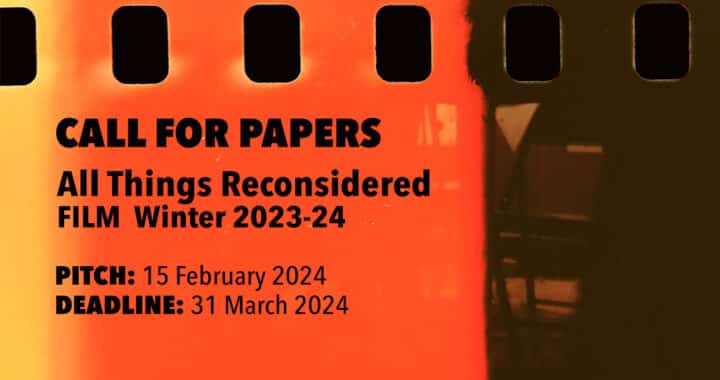
A funny thing happened to me last month on the New York City subway, as I was reading Volume One of the Library of America’s massive new two-volume collection of John Updike’s short fiction.
I had started, and quickly became engrossed in, “Transaction”, a notably explicit 1973 story about a middle-aged john who takes a prostitute back to his hotel room. As the sex scene got underway, and paragraph upon paragraph of lush, adjective-laden prose flowed by in a humid torrent, I dimly recollected the notoriety that once surrounded Updike’s 1968 novel Couples (one of the last major dirty-book scandals prompted by a straight male author), and remembered further the currency that his poem “Fellatio” enjoyed among the litterateurs who sat at the back of the high school bus. I also started to cast covert glances around me while on the train, half-convinced someone in the immediate vicinity must have been psychically attuned to the invisible cloud of precipitation slowly spreading from the book open in front of me.
And then: at the precise moment in the story when heavy-duty oral got underway (“when she would swing her crotch around to his face its spread wet halves would swamp his consciousness like a star map of both hemispheres”), a cascade of lukewarm water poured from a vent above my head directly onto the page I was reading.
The interruption was both startling—rattled, barely suppressing an exclamation, I leapt up from my seat—and somehow apt. In the 7 October 2013 issue of The New Yorker, Philip Roth was quoted as saying of Updike, “It’s apparent everywhere in his work… the sensuous apprehension of whatever’s near at hand.” Sensuous apprehension? What I experienced on the subway was more like John Updike in Sensurround! (To make an appropriately ‘70s-themed allusion.)
Well, to get us back safely onto dry land, Roth’s phrase “sensuous apprehension” is effective shorthand for Updike’s famous gift, the precise, painterly flair that let this onetime art student from small-town Pennsylvania capture the minutiae of everyday life in America for more than a half-century. It’s a gift that reveals itself as early as the first story in the new Library of America collection, 1953’s “Ace in the Hole”:
He extended the rattle toward his daughter, shaking it delicately. Made wary by this burst of attention, Bonnie reached with both hands; like two separate animals they approached from opposite sides and touched the smooth rattle simultaneously.
That image of the baby’s grasping hands clicks like the shutter sound on an iPhone camera, preserving a moment in time. Coming when it does at the start of a two-volume, 1,872-page compilation, it also offers an initial clue as to why so many of these stories are so vivid, and why they stay that way, even after you’ve plowed through 186 of them.
Depending on whom you listen to, God, or the devil, is in the details, and that’s exactly where Updike’s talent lies too; the man who was famously, even notoriously never at a loss for words was just getting started with that arresting image from 1953. It’s an ability that doesn’t always translate into satisfactory novels, with their need for dramatic unities, momentum, et cetera, but it’s one that seems uniquely fitted for the smaller form of the short story.
Smaller, I should say, but no less potent or intense. Comparisons to still lifes and string quartets may not be out of place here; or better yet, think of 45s as opposed to albums. Because for well over a decade, from the late ’50s into the ’70s, Updike was regularly knocking out classics as if they were so many hit singles. These are the stories where he pushes past his habitual charm and eloquence—past his almost stupefying facility for conventionally well-wrought, entertaining, satisfying reads, of which there are too many here to name—and breaks through into something deeper.
It’s hard to overstate, for example, the almost magical properties of “The Happiest I’ve Been”. This is a story of two college boys attending a New Year’s Eve Party the night before they drive from Pennsylvania to Chicago. It captures an extraordinary amount of what it’s like to be young in all of 17 pages. A more ambiguous coming-of-age tale, meanwhile, is the perverse epiphany that concludes “Pigeon Feathers”, in which the slaughter of defenseless birds reaffirms another Pennsylvania teenager’s religious faith.
Philip Roth once earlier lauded Updike as America’s “second Hawthorne”, and two stories in particular bear out that judgment: “The Hermit”, the tragedy of a genuine nonconformist who wants to be left alone in the woods, and “The Indian”, in which a Native American haunts, perhaps literally, a Massachusetts seaside town. To evoke another paleface, the portrait of an affable yet tragically incomplete American tourist on a Nile River cruise in “I Am Dying, Egypt, Dying” pulls off a combination of surface charm and underlying pathos that wouldn’t embarrass mid-period Henry James. (In 2013, meanwhile, the trio of urbane, cosmopolitan Egyptian supporting characters in that story are their own source of fascination.)
A benefit of the Library of America’s strictly chronological presentation is that it highlights the vagaries of Updike’s inspiration, so that a haunting major story like “The Hermit” can be immediately followed by “During the Jurassic”, an engaging goof about dinosaurs enjoying a suburban cocktail party. Also, the wit of these early stories could be the subject of a separate appreciation. Weeks after reading “A Madman”, I still haven’t been able to dispel from my head this image of a young American couple, at Oxford for a year of study, adjusting to English academic housing: “In the morning, dressing, my wife and I skipped in and out of the radiant influence of the electric heater like a nymph and satyr competing at a shrine.”
In the introduction to a 2003 collection of his early short fiction, Updike declared, in a phrase that has become all but canonical, “My only duty was to describe reality as it had come to me, to give the mundane its beautiful due.” That’s a succinct summary of his artistic credo, of course, but it doesn’t quite do justice to the experience of reading all these stories, in order, over the course of several weeks. For starters, there’s a curious fact about the mundane: given the passage of enough time, it gets transmuted into a kind of exotica. It’s an effect that registers as early as the second story in the collection, 1954’s “Friends from Philadelphia”, with this matter-of-fact courtesy:
Mrs. Lutz shook a wrinkled pack of Herbert Tareytons at him. “Smoke?” she said.
The unfamiliar brand name only adds to the piquancy of a middle-aged woman’s offering of a cigarette to her daughter’s teenage visitor. (It’s a trope in the early stories: everybody lights up.) A few years later, the hero of “Unstuck” (1961) is trying to shovel his “1960 Plymouth SonoRamic Commando V-8, with fins” out of the driveway the morning after a blizzard; after marveling at the name of the car, which sounds like something out of The Jetsons, my immediate reaction was to think, “With fins? No wonder he can’t get it out of the snow!”
As the years pass, though, and the stories march steadily toward the present day, this tantalizing strangeness mutates into something different, a time-warp quality all the more potent for being conjured out of such everyday talismans and totems. For me, the definitively head-spinning Proustian moment arrived with a batch of stories from the early ‘70s in which Updike evokes, within just a few pages, orange Rexall drugstore signs, “Superballs under the radiator,” and the “heavenly blue” of a backyard swimming pool. These things, you begin to realize, are utterly familiar and at the same time irretrievable—which accounts for the elegiac quality that at first seeps into the later stories and then becomes their overarching subject.
In a 1969 story Updike can already acknowledge that he and his contemporaries belong to “their own, strange, in-between generation—too young to be warriors, too old to be rebels.” Theirs are lives initially shadowed by the Depression and World War II that come to full maturity with postwar prosperity. (Think of Don Draper and some of the other Mad Men characters, before their arteries and their consciences had started to harden.) Perhaps what’s most striking about these young Americans of the ’50 and ‘60s, from a 21st-century perspective, is how quickly they assume the full mantle of adulthood, marrying and having kids right out of college. Decades later, Updike will acknowledge how much the culture has changed when the middle-aged protagonist of “Wildlife” (1986) reflects on his grown son’s procession of live-in girlfriends:
None of them lasted, none of them apparently excited that romantic wish so common to men of Ferris’s generation, the wish to marry … The romance that, for Ferris, had… made him want to marry not once but repeatedly had quite vanished from American culture—a casualty, perhaps, of co-ed dormitories or the impossible prices of starter housing.
But there’s trouble ahead for the young couples of the ‘50s and ‘60s stories, as that “marry not once but repeatedly” in the above excerpt hints. Adultery and divorce will ripple through this generation with seismic force; the resultant shocks and dislocations will so consume Updike’s imagination that it’s almost impossible to imagine what shape his career would have taken if some combination of personal experience and a feel for the Zeitgeist hadn’t led him to this essential subject. (In April 1968, when Couples came out, he appeared on a Time magazine cover bearing the headline “The Adulterous Society.”)
The decisive break arrives in 1962-63, with three stark stories all composed within a year of one another — “Solitaire”, “The Stare”, and “The Morning” — that sound a new note of anguish. From there, for the next 45 years, Updike will spin a seemingly infinite number of variations on the same basic themes, and while there were later times when I grew bored with his adulterers (“Don’t you people have anything better to do?” I thought, reading “A Constellation of Events”, from 1975), more often than not my reaction was to marvel at how faithfully this particular muse kept bringing him the goods. Updike’s fidelity to infidelity, you might say, is part of the secret that allowed him to remain so productive for so long.
What becomes especially poignant in Volume Two of the collection, when the stories take on a more retrospective cast, is a recurring sense that these survivors of divorce are never quite whole after those initial ruptures. As the convalescent hero of “The City” (1981) reflects, “there was no disguising our essential solitude.” While it’s true that the later stories exhibit a narrower imaginative range than the first volume, Updike’s deepening preoccupation with the passage of time offers substantial compensations. A fascinating time-travel effect steals into the collection as exquisitely rendered recollections of trolley cars and ten-cent movie theaters vie for space, sometimes in the same story, with later bric-a-brac like fax machines, personal computers and Dunkin Donuts. (1990’s “A Sandstone Farmhouse”, where a Manhattan ad man finally comes to terms with the rural Pennsylvania upbringing he spent half a lifetime putting behind him, justifies the second half of the Library of America set all on its own.)
Any collection of 186 stories by the same author is bound to have its share of duds. Updike was such a pro that even his minor efforts maintain the same meticulous finish; the misfires usually result from his experimenting with form or subject matter, and offer the inherent interest of a major talent testing its boundaries. “Packed Dirt, Churchgoing, a Dying Cat, a Traded Car” from the early ‘60s is one of two stories (the other one’s title is even longer) that show him trying to use the short story as a kind of essayistic grab bag uniting disparate materials; neither one quite coheres, but both are tantalizing exercises that should goad other writers into exploring this idea further. In Christopher Carduff’s excellent end notes, we learn that Updike wrote both pieces as a means of countering the writer’s block that afflicted him at the time—not that I believe he ever seriously wrestled with writer’s block as most of us conceive of it.
An even more striking anomaly is 1971’s “The Beloved”, a character sketch of a bisexual actor that might have needed to be a complete novel if it was even going to begin to work. The tipoff that Updike is out of his depth is that the characters speak in a brittle, unreal idiom quite out of keeping with the seemingly effortless naturalism of most of his dialogue. But even here, the early pages depicting the actor’s alienated childhood have an eerie quality unlike anything in the collection except maybe “The Hermit”, and it’s fascinating to learn (again, from the end notes) that The New Yorker‘s fiction editor William Maxwell shrewdly quarried those pages off into a standalone piece for the magazine.
“Transaction”, the story I got to experience as mixed media on New York City public transit, doesn’t quite come off, either. As the scene goes on and on, like a John Updike letter to Penthouse magazine, the explicitness begins to feel like a kind of writerly aggression: from a stylist as fastidious as this one, the use of “swamp”, as a verb, in an account of cunnilingus, can only be a calculated provocation. But all those exertions and all those adjectives build to an ultimately unconvincing epiphany, one that I won’t spoil here; other people should read it and decide for themselves.
The one time I was embarrassed for Updike in 186 stories was 2002’s “Varieties of Religious Experience”, an attempt to encapsulate 9/11 through vignettes of four very different individuals, three Americans and, yes, one hijacker, as they relate to the fateful day. I respect the ambition here, but these imagined lives add little to what we already knew from coverage like the “Portraits of Grief” series in the New York Times. More than that, whether in fiction or in film, conventionally naturalistic renderings of 9/11 and its fallout like this one just don’t seem adequate to the material: it may be decades before these upheavals receive an appropriate imaginative response, which is far more likely to be metaphorical than literal. Updike himself would be similarly tripped up in his 2006 novel Terrorist, another ill-fated foray into topicality whose by-the-numbers psychologizing exposes just how much this subject matter eluded him.
Terrorist might have been the critical nadir of the decade or more before Updike’s death in 2009, when he seemed to have become everybody’s favorite punching bag, the target of putdowns that quickly became semi-legendary even before the Internet taught us how to make such things “viral”. James Wood, in the London Review of Books: “Dated, provincial and minor.” David Foster Wallace, quoting a friend in the New York Observer: “A penis with a thesaurus.” Nicole Krauss, interviewed in Esquire: “A boring old fart.” Admittedly, the string of mostly minor works Updike published in those years didn’t help his cause any, but in retrospect a lot of the brickbats hurled his way have a plainly exasperated quality to them, the piling-on a show of frustration with a body of work that had grown so prodigious and so unmanageable that probably nobody was capable of seeing it plain any more.
The provinciality charge ties in with a familiar line of attack on Updike, which holds that he was somehow too WASP and too middle-class to qualify as a major contender. With the middle class plainly on the run these days, that charge seems more than a little dated itself. Besides, the whole question of provinciality might be more subjective than a lot of us like to think. Updike’s primary Russian translator Tatiana Kudriavtseva, who died in Moscow in September 2013, testified to his books’ widespread popularity in the Soviet Union, and said of his character Rabbit Angstrom that Updike could be “writing about the Russian man in the street.” (Meanwhile, with TV so much in the ascendant these days, someone also needs to point out that Rabbit is a critical antecedent for both Homer Simpson and Tony Soprano.)
To the Library of America’s great credit, any real reckoning with Updike’s stature now has to contend with his collected short stories at least as much as it does with the four Rabbit novels and his huge, and hugely ingratiating, corpus of literary criticism. In fact, it’s no hyperbole to suggest that he may eventually be regarded as a great short story writer who also happened to write some good novels.

![Call for Papers: All Things Reconsidered [MUSIC] May-August 2024](https://www.popmatters.com/wp-content/uploads/2024/04/all-things-reconsidered-call-music-may-2024-720x380.jpg)



